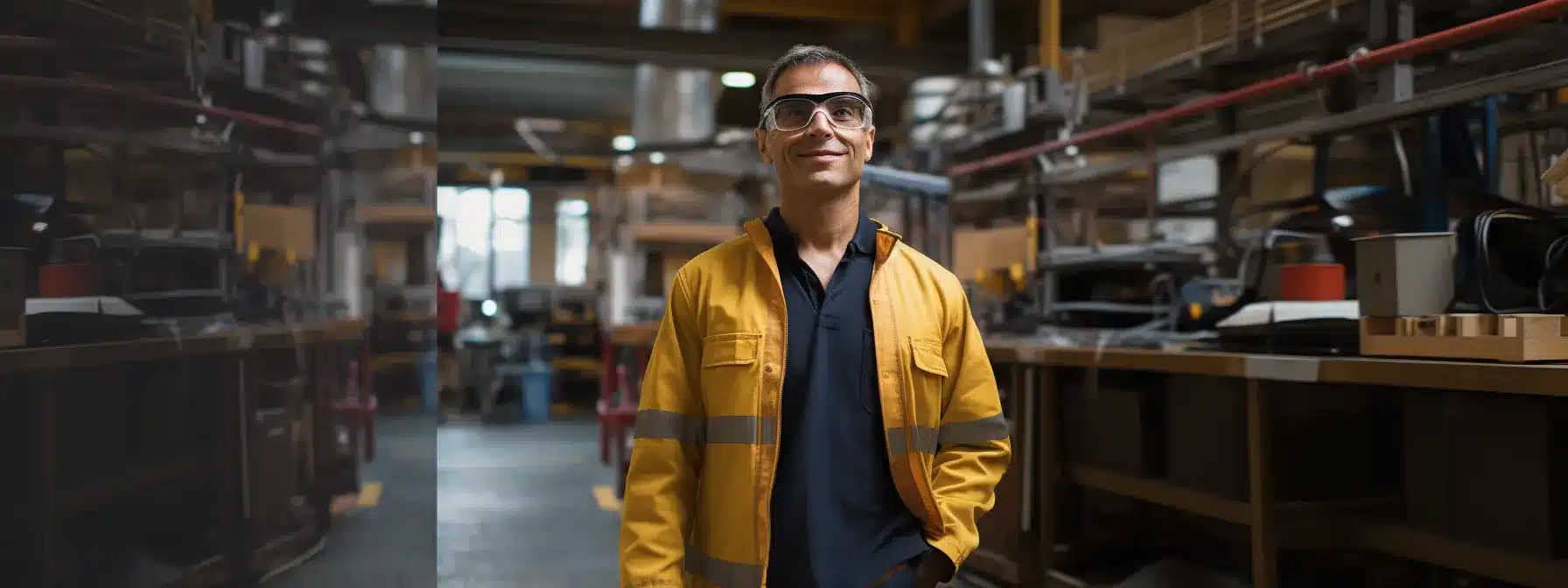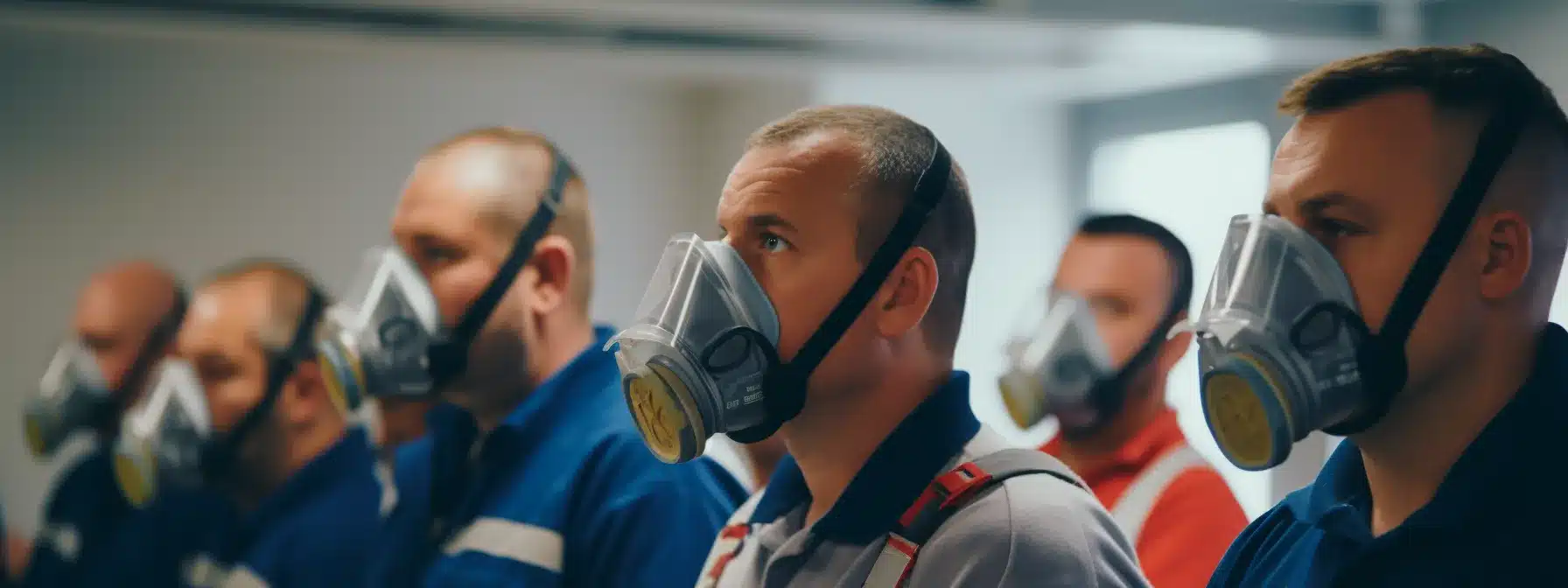Comprehending CAOHC Standards for Enhanced Industrial Respiratory Protection
Taking into account the crucial role of occupational safety in industries, understanding the Council for Accreditation in Occupational Hearing Conservation (CAOHC) standards for industrial respiratory protection has become paramount.
These encompass not just respirator use and facepiece fitting, but also a broad spectrum of elements like noise control, skillsoft training, and the usage of protective gear like hearing protectors and eye protection.
Non-compliance can result in serious repercussions, from the contamination of worksites with potentially harmful contaminants to violations of hazard communication protocols.
Keep reading this post to explore further how implementing these standards can enhance safety and prevent health risks in your industry.
Key Takeaways
- Compliance With CAOHC Standards Is Crucial for Maintaining Respiratory Safety in the Industrial Workplace
- Implementing CAOHC Standards Can Significantly Reduce the Risk of Developing Occupational Health Issues and Improve Productivity
- Non-Compliance With CAOHC Standards Can Lead to Increased Health Risks for Employees, Financial Costs for the Organization, and Damage to the Company’s Reputation
- The Implementation of CAOHC Respiratory Protection Standards Involves Recognizing Hazards, Acquiring and Implementing the Proper PPE, Providing Training and Education, and Regular Monitoring and Evaluation
- Several Industries Have Seen Notable Improvement in the Health and Safety of Their Workers by Adhering to CAOHC Standards and Implementing Appropriate Respiratory Protection Measures
Introduction to CAOHC Standards on Industrial Respiratory Protection

Industrial safety standards, including those implemented by the Council for Accreditation in Occupational Hearing Conservation (CAOHC), emphasize the integral aspect of respiratory protection. This detailed look into CAOHC’s rules and regulations will reveal the expansive requirements for maintaining respiratory safety. This exposure alludes to key factors such as Skillsoft training programs, hazard communication, and hearing conservation.
Through Skillsoft, employees acquire knowledge about proper respirator usage, which is crucial in avoiding contaminant inhalation. Essential topics include the usage of facepieces, how to request access to new safety equipment, and proper face mask care and maintenance. The following breakdown elucidates upon these respiratory safety measures:
- Adopting the right facepiece: Ensuring a snug fit is paramount for the proper functioning of a respirator.
- Request access for new safety equipment: It’s critical for employers to equip their workers with supplies that match specific hazard levels.
- Proper face mask care and maintenance: Regular cleaning of respirators is necessary to ensure their effectiveness in the long run.
Another pillar of the CAOHC standards is hazard communication. This covers the necessity for workers to understand potential risks in their working environment and proper use of safety gears like eye protection, hearing protectors, and scaffolds. Improved hazard communication will result in safer and more compliant worksites, thus reducing the risk of respiratory and auditory damage.
The hearing conservation program is a significant component of CAOHC standards. This program imparts guidelines on noise control and TSI (Total Safety Integrity), with engineering controls put in place to reduce noise levels. With the implementation of suitable hearing protectors, businesses can uphold mandatory hearing conservation efforts, preventing auditory mishaps in hazardous noise zones.
Categories of CAOHC Respiratory Protection Standards

CAOHC respiratory protection standards are split into distinct categories, each focusing on critical areas within the realm of industrial safety. These include the use of Personal Protective Equipment (PPE), Hazard Identification and Control, Training and Education, and Program Evaluation. A thoughtful understanding of these aspects helps in cultivating a rewarding safety culture within respective job sites.
Personal Protective Equipment (PPE) forms the primary line of defense in respiratory protection. It encompasses respirators, eye protection, facepieces, and hearing protectors to guard against exposure to harmful airborne contaminants. Such equipment should meet specific criteria for optimum usability:
- Respirators and facepieces: They should fit well, be comfortable, and provide a reliable seal to the wearer’s face.
- Eye protection: It should safeguard the workers’ eyes from airborne particulates while providing a clear vision.
- Hearing protectors: They must be capable of reducing noise levels to an acceptable degree, promoting hearing conservation.
Hazard Identification and Control involves recognizing potential risk factors in a work environment and implementing measures to reduce or eliminate them. This necessitates routinely evaluating work conditions for potential exposure to noise and respiratory hazards such as airborne contaminants. Noise control and use of proper industrial hygiene assessment tools like TSI equipment forms a critical part of this step.
Training and Education is another cornerstone of the CAOHC standards. Workers need to receive ongoing Skillsoft training on respirator use, hazard communication, and the effective request for access to safety equipment. On the other hand, Program Evaluation encompasses the regular review and monitoring of the implemented programs, ensuring their effectiveness and workers’ compliance with established safety measures.
Importance of Adhering to CAOHC Standards in the Industrial Workplace

Adherence to the CAOHC standards within the industrial workplace is critical for a multitude of reasons apart from complying with regulatory mandates. Notably, implementing these standards will substantially reduce the risk of workers developing occupational health issues. These could range from respiratory ailments resulting from contaminant exposure to auditory damage due to inadequate noise control.
Through the use of appropriate facepieces, respirators, and PPE, workers enjoy enhanced protection against the inhalation of hazardous substances. Building a culture of safety that emphasizes the proper use and care of PPE ensures the effectiveness of this protective gear. Additionally, the essential habit of hearing protectors use, when combined with an effective hearing conservation program, reduces the likelihood of damage from noxious noise exposure.
In addition to the physical health benefits, implementing CAOHC standards often results in improved productivity. A physically healthy and secure employee is more likely to demonstrate increased efficiency and improved focus. Furthermore, proper hazard communication keeps workers informed about potential risks, enabling them to act proactively and creating a safer work environment.
Lastly, adopting the necessary respirator programs and safety protocols fosters a company’s reputation for valuing worker wellbeing. This appreciation positively influences the company’s culture, boosts morale, and can even act as a catalyst for attracting and retaining industrious talent, ensuring a successful future for the organization.
Impacts of Non-Compliance With CAOHC Standards

Non-compliance with CAOHC standards in the industrial workspace can have far-reaching implications. The most immediate impact often manifests in the form of increased health risks for employees. Without the proper use of respirators, facepieces, and hearing protectors, workers are left exposed to harmful airborne contaminants and excessive noise levels.
Furthermore, unmanaged exposure to such health hazards can result in serious health conditions over time. These may include chronic respiratory diseases due to consistent inhalation of hazardous substances and noise-induced hearing loss from constant exposure to high-decibel sounds. Sadly, the late recognition of these ailments often leads to irreversible damage and a significant burden on the healthcare system.
In addition to health repercussions, non-compliance with CAOHC standard can lead to financial costs for the organization. Regulatory bodies may impose substantial penalties and fines for non-compliance. Similarly, the cost of managing health impacts, compensations, and potential lawsuits resulting from non-compliance can severely strain an organization’s finances.
Moreover, a lack of adherence to these standards can tarnish the reputation of a company. Persistent non-compliance suggests a disregard for worker safety and can lead to a loss of employee trust and public confidence. This could result in difficulties recruiting and retaining quality talent and potential backlash from consumers and society.
Steps to Implement CAOHC Standards for Respiratory Protection in Your Industry

The implementation of CAOHC respiratory protection standards in an industry involves several strategic steps. The initial stage is the recognition of hazards. This step requires a thorough assessment of the industrial environment to identify potential air contaminants and noise levels that might necessitate the use of respirators, facepieces, and hearing protectors.
Subsequently, the acquisition and implementation of Personal Protective Equipment (PPE) follows. Ensuring employees have access to the correct type and quality of PPE is paramount for protection against identified hazards. The primary elements of PPE selection include:
- Respirators: Select respirators based on the type and level of air contaminants present in the workplace.
- Facepieces: Choose the facepiece that provides a comfortable fit and ensures an airtight seal for the wearer.
- Hearing Protectors: Invest in quality hearing protectors for workplaces with high noise levels to uphold hearing conservation efforts.
Training and education is the next important phase. Equip your employees with the necessary knowledge about the potential hazards, proper use of PPE, and safe work practices. Utilizing platforms such as Skillsoft for comprehensive training can prove useful in achieving this objective.
Finally, regular monitoring and evaluation are essential to ensure the effectiveness of the implemented measures. It’s crucial to conduct regular audits, carry out hazard communication updates, and reassess PPE as necessary. Throughout this process, remember to request access to supplemental resources or expert consultation whenever needed to ensure your safety programs are up to industry standard.
Case Studies of Industries Benefiting From CAOHC Standards Compliance

Several industries have reaped significant benefits from adhering to CAOHC standards and putting into practice appropriate hearing conservation programs and respiratory protection measures. Notable examples can be found in industries such as manufacturing, construction, and warehousing that have seen notable improvement in the health and safety of their workers. Their success stories are a testament to the value of compliance with occupational safety standards.
A manufacturing plant was experiencing a high incidence of respiratory ailments amongst its workers due to continuous exposure to airborne contaminants. Implementation of CAOHC standards led to the adoption of adequate respirators and facepieces along with employee training seminars. The results were commendable:
- Reduced incidence of respiratory diseases: Workers reported fewer respiratory issues, leading to decreased healthcare costs for the company.
- Improved productivity: With less absenteeism due to health issues and better focus on the job, the plant saw improved productivity rates.
- Enhanced company reputation: By demonstrating concern for worker safety, the company developed a positive reputation attracting quality talent.
In a large construction company, workers were constantly operating in high noise areas. With the establishment of a hearing conservation program and the provision of adequate hearing protectors, this problem was significantly mitigated. Noise-induced hearing loss cases reduced, workers’ morale improved, and overall productivity increased.
Lastly, a sizable warehouse implemented CAOHC standards and saw a drastic reduction in hazards related to improper scaffold use and inadequate noise control. After carrying out hazard communication training, workers became more conscious of their safety decisions. With fewer accidents and improved industrial practices, the warehouse benefited from higher levels of safety and efficiency.

